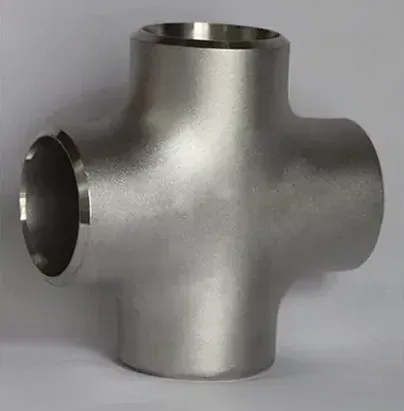-
Cangzhou Yulong Steel Co., Ltd.
-
Phone:
+86 13303177267 -
Email:
admin@ylsteelfittings.com
- English
- Arabic
- Italian
- Spanish
- Portuguese
- German
- kazakh
- Persian
- Greek
- French
- Russian
- Polish
- Thai
- Indonesian
- Vietnamese
- Zulu
- Korean
- Uzbek
- Hindi
- Serbian
- Malay
- Ukrainian
- Gujarati
- Haitian Creole
- hausa
- hawaiian
- Hebrew
- Miao
- Hungarian
- Icelandic
- igbo
- irish
- Japanese
- Javanese
- Kannada
- Khmer
- Rwandese
- Afrikaans
- Albanian
- Amharic
- Armenian
- Azerbaijani
- Basque
- Belarusian
- Bengali
- Bosnian
- Bulgarian
- Catalan
- Cebuano
- China
- China (Taiwan)
- Corsican
- Croatian
- Czech
- Danish
- Esperanto
- Estonian
- Finnish
- Frisian
- Galician
- Georgian
- Kurdish
- Kyrgyz
- Lao
- Latin
- Latvian
- Lithuanian
- Luxembourgish
- Macedonian
- Malgashi
- Malayalam
- Maltese
- Maori
- Marathi
- Mongolian
- Myanmar
- Nepali
- Norwegian
- Norwegian
- Occitan
- Pashto
- Dutch
- Punjabi
- Romanian
- Samoan
- Scottish Gaelic
- Sesotho
- Shona
- Sindhi
- Sinhala
- Slovak
- Slovenian
- Somali
- Sundanese
- Swahili
- Swedish
- Tagalog
- Tajik
- Tamil
- Tatar
- Telugu
- Turkish
- Turkmen
- Urdu
- Uighur
- Welsh
- Bantu
- Yiddish
- Yoruba

Dec . 01, 2024 00:20 Back to list
Types of Flange Gaskets and Their Applications in Industrial Settings
Understanding Flange Gasket Types An Essential Guide
Flange gaskets are critical components in piping systems, serving as a sealing interface between two flanges. They prevent leaks, ensure system integrity, and contribute to overall safety and efficiency. The type of gasket used can significantly affect the performance and reliability of a joint. In this article, we will explore various types of flange gaskets, their materials, applications, and key considerations when selecting the appropriate gasket for specific environments.
Types of Flange Gaskets
1. Spiral Wound Gaskets Spiral wound gaskets are made from alternating layers of metal and compressed non-asbestos fillers. Their unique design allows them to accommodate a range of temperatures and pressures, making them suitable for demanding applications. Commonly used in chemical and petroleum industries, these gaskets offer excellent flexibility and recovery, ensuring a tight seal even under fluctuating conditions.
2. Ring Gaskets Ring gaskets are simple, flat gaskets typically made from rubber, cork, or metal. They are used in applications where pressure is relatively low, and temperature fluctuations are minimal. The simplicity of design makes them cost-effective, and their ease of installation is an added advantage. However, they may not provide a reliable seal in high-pressure environments.
3. Full Face Gaskets As the name suggests, full face gaskets cover the entire face of the flange. They are commonly made from materials such as neoprene or PTFE and are designed for use with flat-faced flanges. Their broad surface area distributes stress evenly, which is beneficial in preventing leaks. Full face gaskets are often used in water treatment and food processing industries due to their clean sealing properties.
4. Camprofile Gaskets These gaskets consist of a metallic core with soft sealing material on the surfaces. The camprofile design allows for a significant sealing force with minimal bolt load, making them suitable for high-temperature and high-pressure applications. They are often used in oil and gas, marine, and power generation sectors.
5. Metallic Gaskets Metallic gaskets, usually made from materials like stainless steel, are designed specifically for high-temperature and high-pressure environments. These gaskets can handle extreme conditions without deforming, offering a reliable seal under various stresses. However, they may require special installation techniques and careful handling due to their rigidity.
flange gasket gasket types

Material Considerations
The choice of material for a flange gasket depends on several factors, including the operating environment, temperature limits, and chemical compatibility. Common materials include
- Rubber Flexible and suitable for low-pressure applications. However, it may degrade in high temperatures or harsh chemicals. - Graphite Offers excellent thermal resistance and is often used in high-temperature applications. It can, however, be prone to crushing under excessive pressure. - PTFE (Polytetrafluoroethylene) Chemically resistant and suitable for a wide range of applications, including those involving corrosive substances. - Metal Ideal for high-pressure and high-temperature environments but may require careful installation to avoid damage.
Selecting the Right Gasket
When choosing a flange gasket, consider the following factors
- Operating Temperature and Pressure Ensure the gasket material can withstand the specific conditions. - Chemical Compatibility Check compatibility with fluid or gas being sealed to prevent material degradation. - Flange Type Match the gasket type with the flange design (e.g., raised face, flat face) for optimal sealing. - Application Understand the conditions of your specific application to select a gasket that will perform reliably over time.
Conclusion
Selecting the right flange gasket type is crucial for ensuring the integrity and efficiency of a piping system. With a variety of types and materials available, it's essential to consider the specific requirements of your application to avoid leaks and failures. Investing time in choosing the appropriate gasket will pay off through enhanced performance and safety in the long run.
Latest news
-
ANSI 150P SS304 SO FLANGE
NewsFeb.14,2025
-
ASTM A333GR6 STEEL PIPE
NewsJan.20,2025
-
ANSI B16.5 WELDING NECK FLANGE
NewsJan.15,2026
-
ANSI B16.5 SLIP-ON FLANGE
NewsApr.19,2024
-
SABS 1123 FLANGE
NewsJan.15,2025
-
DIN86044 PLATE FLANGE
NewsApr.19,2024
-
DIN2527 BLIND FLANGE
NewsApr.12,2024
-
JIS B2311 Butt-Welding Fittings LR/SR 45°/90° /180°Seamless/Weld
NewsApr.23,2024











